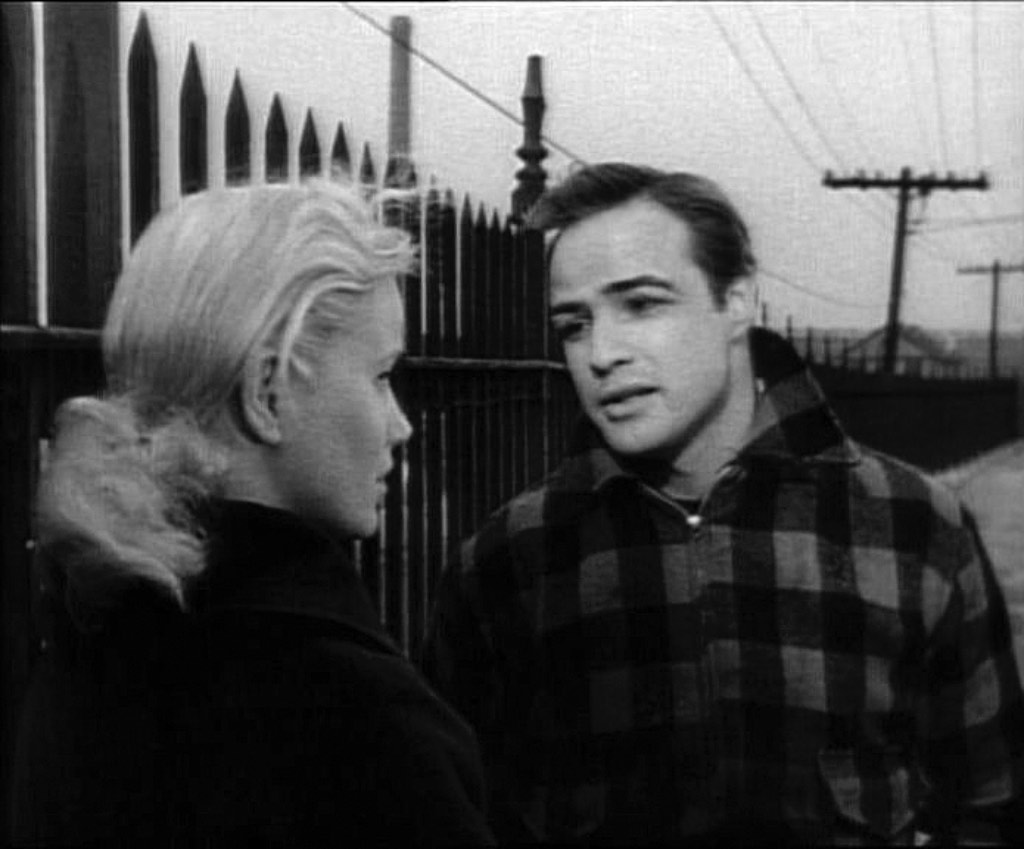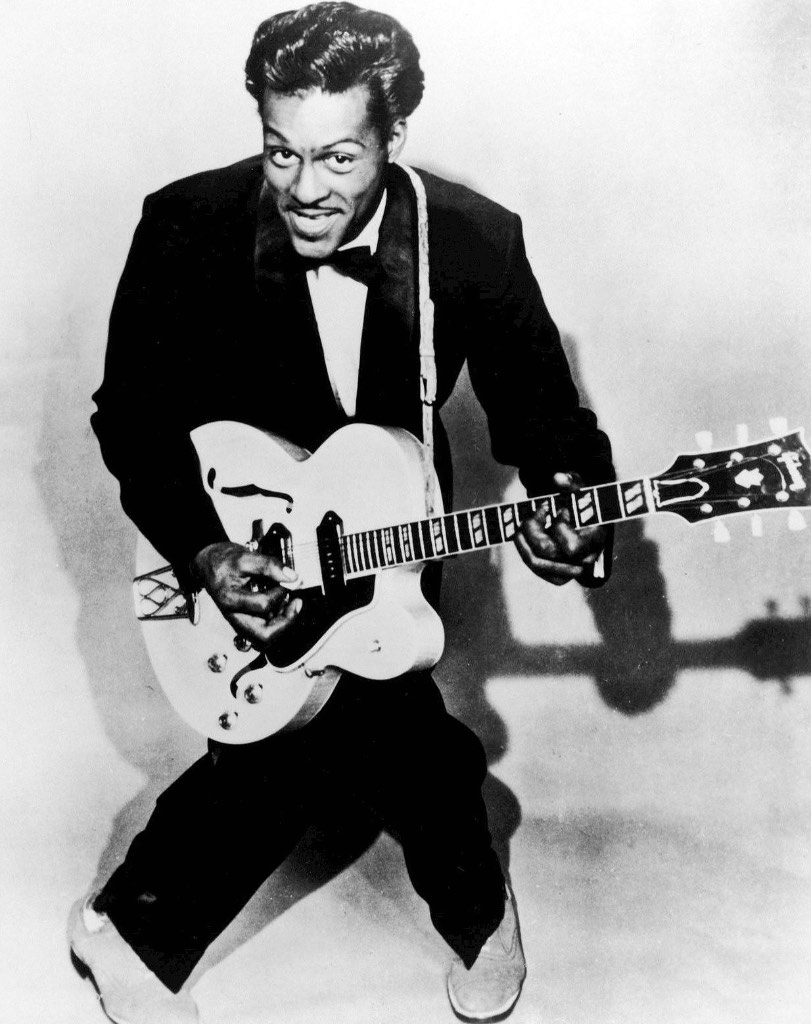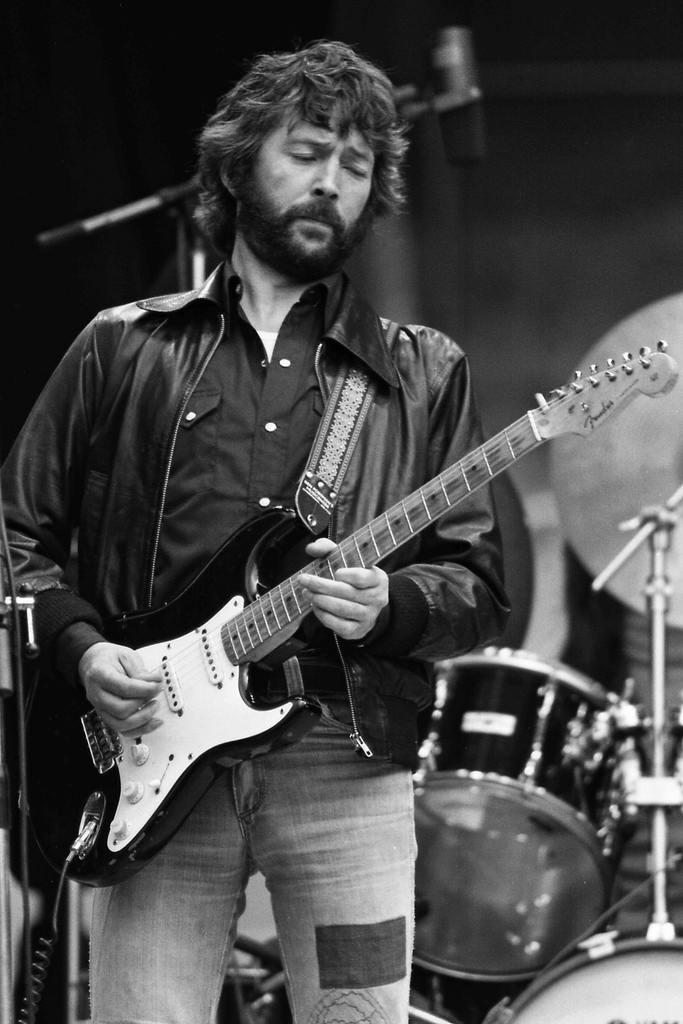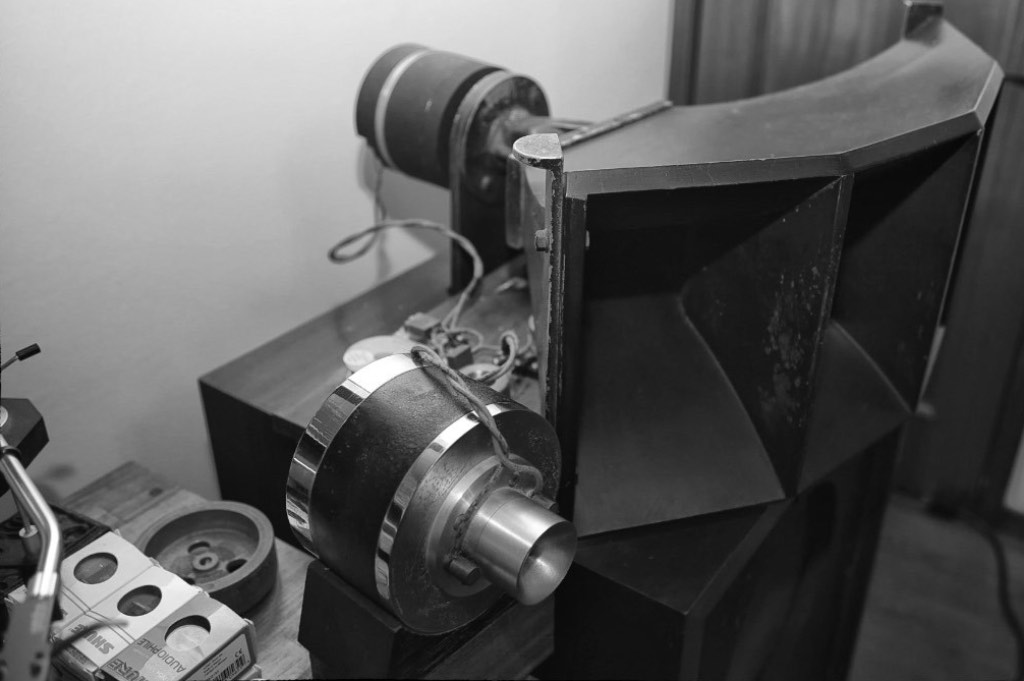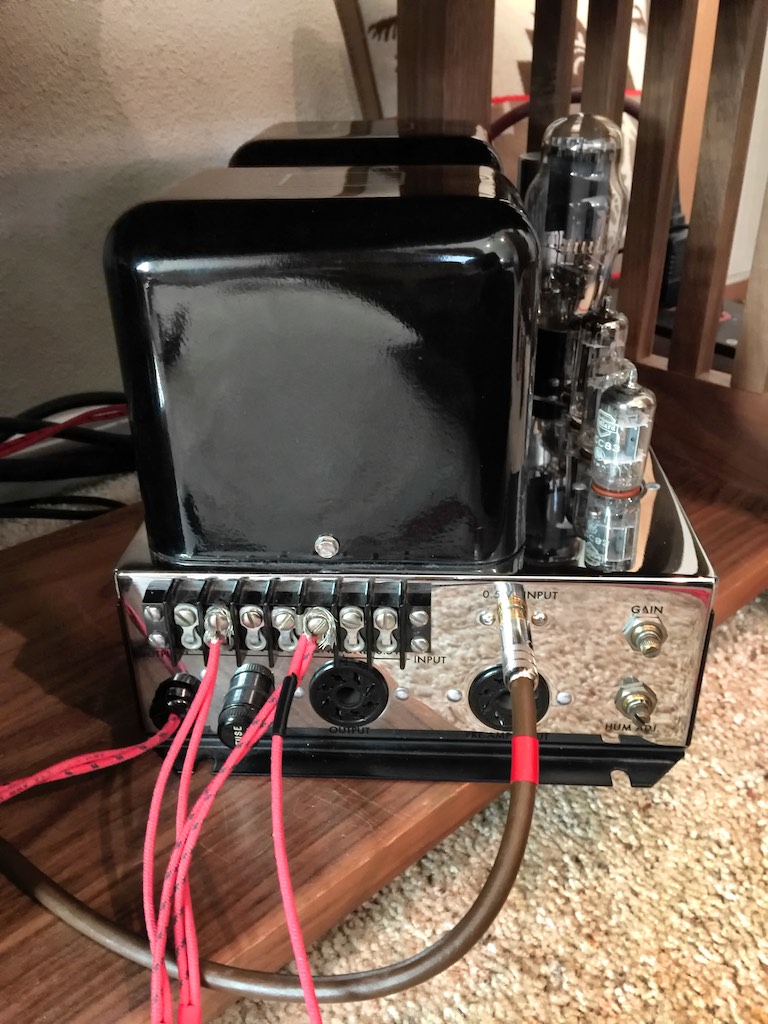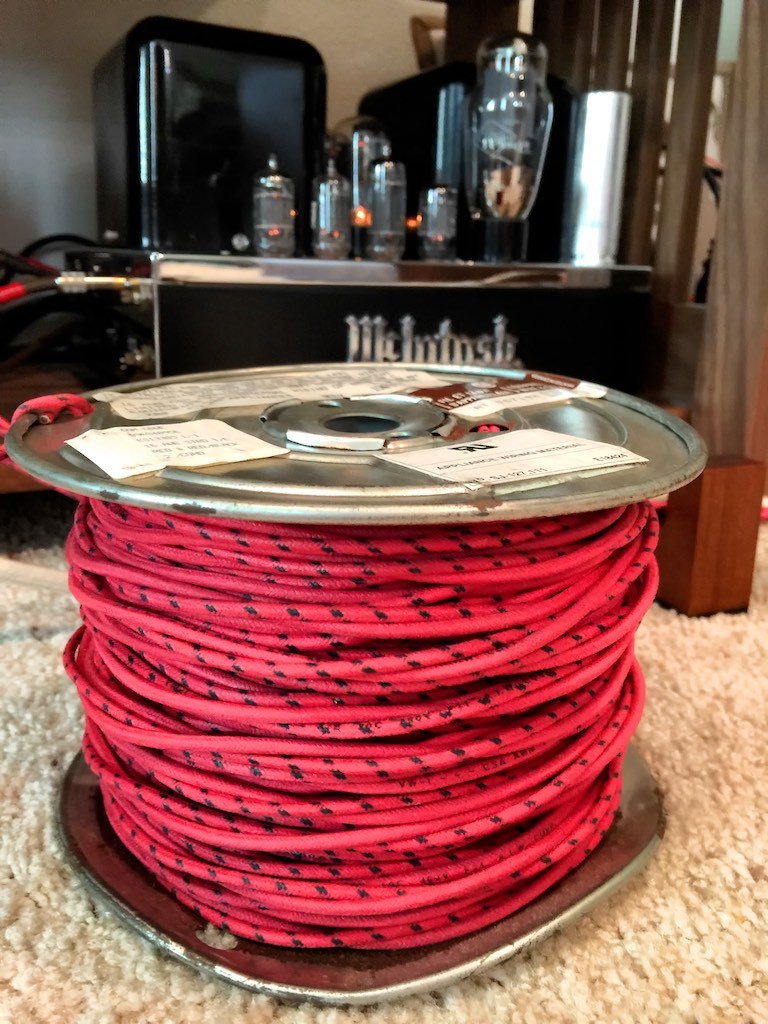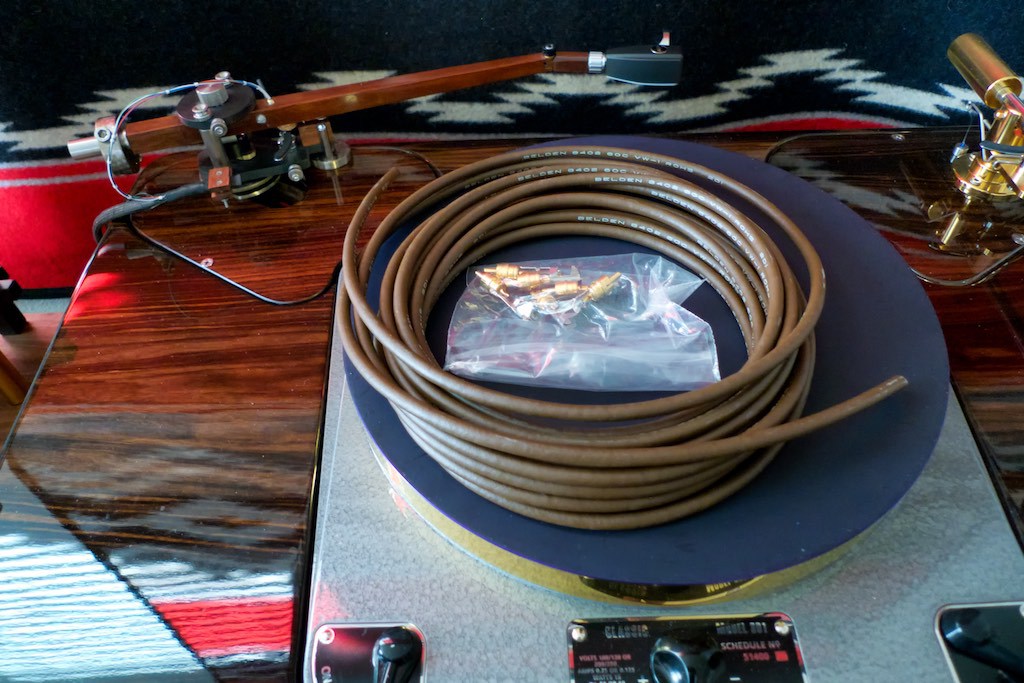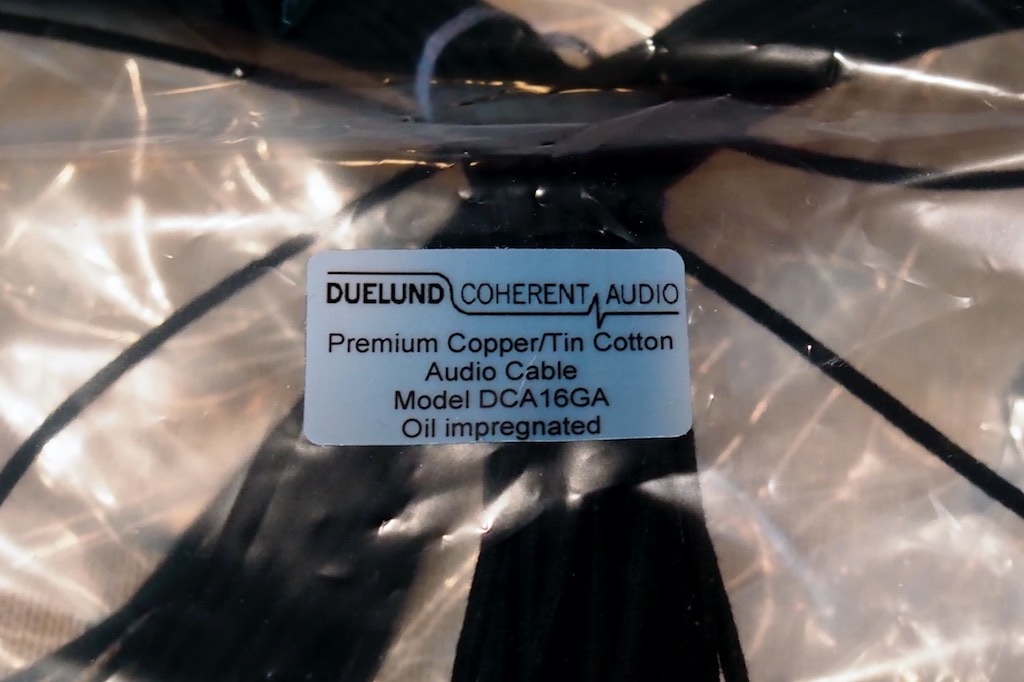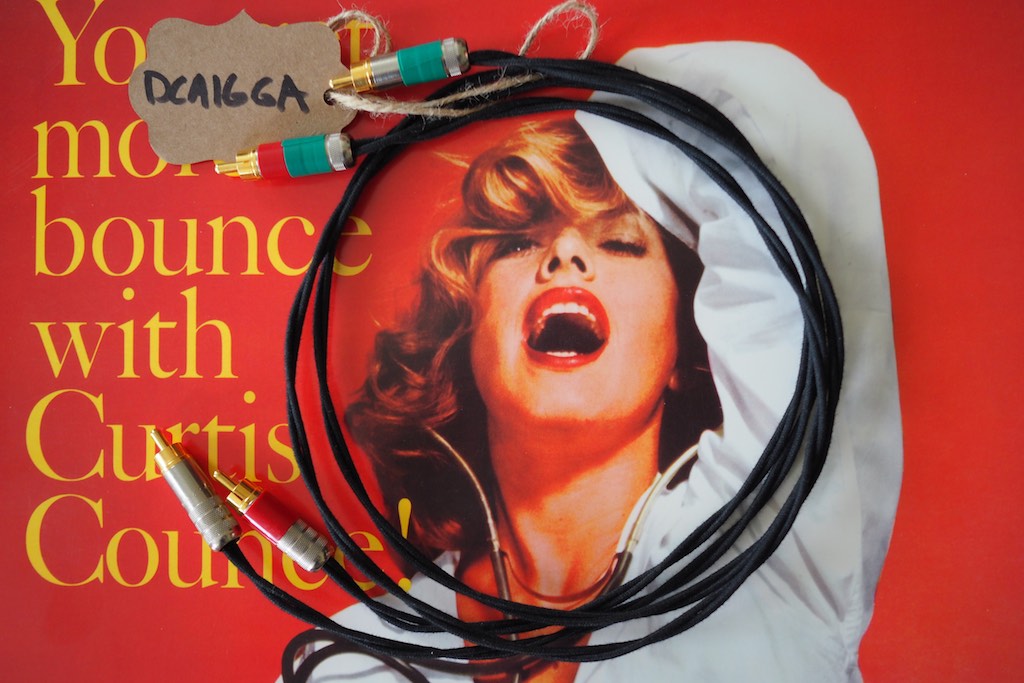I've been writing my bum off the last few weeks working on a survey article of the Duelund DCA line of tinned-copper cables for Positive Feedback.
I'll be submitting the article to Positive Feedback Editors David and Dave for their consideration sometime today, so you should expect to see it published before too long.
Until then, I thought you'd enjoy a 'sneak preview'!
¸¸.•*¨*•♫♪¸¸.•*¨*•♫♪¸¸.•*¨*•♫♪
In very speedy fashion Positive Feedback Editor Dave Clark just posted the article on Positive Feedback here!
¸¸.•*¨*•♫♪¸¸.•*¨*•♫♪¸¸.•*¨*•♫♪
An Adventure in the Art of Tone with the Duelund Coherent Audio DCA Series of Tinned-Copper Cables, Part 1
By Jeff Day
Back in Issue 88 of Positive Feedback I wrote about the Duelund Coherent Audio DCA16GA tinned-copper audio cable that I’ve been using for building interconnects, loudspeaker cables, and for the internal wiring of my Tannoy Westminster Royal SE loudspeakers’ external Duelund CAST external crossovers.
That was a scant seven months ago, and now due to popular demand from audio enthusiasts around the world the Duelund Coherent Audio DCA line of tinned-copper cables has multiplied to include DCA12GA, DCA16GA, DCA20GA, and DCA26GA!
Before I tell you all the details of the Duelund DCA line of cables and my experiences with them, let me back up a little for those of you who are new to the developing story of the nouveau-vintage tinned-copper cable/wire revolution that has been sweeping the audio world over the last few years, and fill you in on what I think is a rather important history behind tinned-copper cables.
Where did tinned-copper cables come from?
Back in 1950's America tinned-copper cables were routinely used in industrial applications, because electroplating copper conductors with tin prevented corrosion and improved their strippability, which made for an altogether more durable & reliable cable for industrial use.
Corrosion was an issue back in the 1950's because the common insulators of the day released sulfur peroxide as they decayed over time, which would then react with the copper conductors to form copper sulfide, which degraded the cables’ performance and durability, and eventually necessitated replacing them.
However, with tinned-copper wire, the sulfur peroxide released from the insulators couldn't degrade the copper by forming copper sulfide, thus protecting the performance characteristics and the durability of the cables, and giving them a much longer service life.
Another factor was that for the shielded cables of the 1950's, the composition of the shielding made it difficult to strip away from bare copper conductors, so tinned-copper conductors were used, as they were easier to field-strip in preparation for use, making life easier for cable installation into industrial applications or commercial products.
So, the origin of tinned-copper cables was related to the purely practical reasons of preventing corrosion and easing strippability, making the wire more durable, reliable, and easy to handle in industrial and commercial applications.
The Use of Tinned-Copper Conductors in Vintage Electric Guitars and Audio
Of particular interest to musicians and audio enthusiasts will be the use of tinned-copper conductors in vintage electric guitars and their amplifiers, and in vintage audio equipment.
Certain vintage electric guitar voices are forever etched into our minds from the music of Chuck Berry (Gibson ES 350), Eric Clapton (‘Blackie’ Stratocaster), Keith Richards (‘Micawber’ Telecaster), and Neil Young (‘Old Black’ Gibson Les Paul), for a few examples.
The electric guitar guys like to use the term ‘vintage tone’ to describe the tonal properties of certain vintage electric guitars and their amplifiers, like the 1957 Gibson ES 350 or Les Paul, the 1954 Fender Stratocaster, the 1950 Fender Telecaster, along with the Fender Deluxe Reverb (think Roy Buchanan) or the Marshall JTM 45 Combo (think Clapton), as a few examples.
Where did the tone go?
As you would expect, electric guitar musicians have noticed the difference in the tonal qualities and musicality of the vintage vs. contemporary electric guitars and their amplifiers, and as far as quite a few electric guitar musicians were concerned, those differences in tone & musicality were not for the better.
In an effort to duplicate those now rare & expensive vintage electric guitars’ tone, the electric guitar guys examined vintage electric guitars and their amplifiers and found that there were certain internal components (as well as the vacuum tube amplification, of course) that contributed to the ‘vintage tone’ of those great electric guitars and their amplifiers, like tinned-copper wire, or certain vintage capacitors like Black Beauties or Bumblebees, or Allen Bradley carbon composition resistors, for example.
Tinned-copper cables & wires faded from the electric guitar and audio scenes for the same reason they did from industrial applications. It simply costs a lot more money to use them in production products, so in an effort to keep costs down and make more money, tinned-copper got phased out over time as new insulators were developed that didn't corrode bare copper conductors, and new shielding materials were developed that made strippability over bare copper conductors a relative breeze.
Those new approaches for insulators & shielding meant that the tinned-copper conductors that were so much more expensive to manufacture faded from the scene, and the forces at penny-pinching companies buried them in the sands of time, largely erasing them from people's memories, until the electric guitar musicians figured out where the tone had gone.
Back to the tone!
After the electric guitar musician community figured out why the tone & musicality of the vintage gear was superior to the modern gear, a cottage industry arose offering re-wiring kits with tinned-copper pushback wire, exotic vintage capacitors like Black Beauties or Bumblebees, vintage-style pots, vintage-style pickups, and other vintage-style components that helped to restore the lost tone & musicality to contemporary electric guitars and their amplifiers.
This interest in ‘vintage tone’ was not lost upon the electric guitar industry, which responded by producing special edition guitars that more closely aligned in tone & musicality to their vintage ancestors.
In a Parallel Audio Universe
In a parallel audio universe, Mr. Shirokazu Yazaki, who has enjoyed being an audio hobbyist all his life, and a successful professional audio designer in Japan for over 40 years, Yazaki-san made a discovery in his vintage home audio system that when using vintage Western Electric WE16GA cable as speaker cables, and the old studio standard Belden 8402 microphone cables as interconnects, that his hifi had a much more ‘real sound’ tonally and musically.
When I first met Yazaki-san during the review of the SPEC RSA-M3 EX Real Sound Amplifier for Positive Feedback (Issue 78), he shared with me his fondness for the vintage Western Electric WE16GA for speaker cables, and the Belden 8402 microphone cable as interconnects, and kindly sent me a bit of both so I could give them a listen for myself.
I tried the Western Electric WE16GA as speaker cables with my Tannoy Westminster Royal SE loudspeakers, and the Belden 8402 as interconnects with my vintage McIntosh vacuum tube electronics, and I was immediately impressed by their performance, and I bought stocks of both to use in my upcoming audio adventures I had planned.
As I began to write about my experiences with the WE16GA and the Belden 8402 at my blog, Jeff’s Place, word quickly got out about their enchanting musical & sonic performance.
Over the course of time, in all four of my home hifi systems, I replaced all of my interconnects with the Belden 8402 microphone cable interconnects, I replaced my speaker cables with vintage WE16GA, and I even completely rewired my Westminster’s internally with vintage WE16GA, and did the same for their spectacular Duelund CAST external crossovers.
I was hooked on their unique combination of musical & sonic performance, and Yazaki-san’s kindly act towards me turned out to be a “shot heard around the world” in enthusiast audio, and set in motion powerful musical forces by encouraging the use of skinny vintage Western Electric WE16GA cable as speaker cables, and Belden 8402 microphone cable as interconnects.
If you guessed that the Western Electric WE16GA cable and Belden 8402 cable share tinned-copper conductors as a common element, you’re exactly right.
These tinned-copper cables quickly became very popular with thousands of audio enthusiasts around the world because of what they did for the music in a home hi-fi system, that is, making it sound much more like ‘real’ live music in terms of tone, dynamics, presence, timbre, beat, rhythm, tempo, and most importantly, they evoked a strong emotional response to the artists’ music.
These tinned-copper cables were also very satisfying in the way they portrayed the non-musical artifacts of the recording process, like imaging, the soundstage, the soundspace, resolution, and transparency, of a recording, which gave the music a reach out and touch it sort of realism that was very vivid, and viscerally enthralling.
In fact, these tinned-copper cables changed the way I thought about the importance of the reproduction of non-musical artifacts from the recording process, and how they could enhance the enjoyment of the recorded music listening experience.
As a bonus, these tinned-copper cables were also inexpensive, and many listeners were able to wire up their entire system with them for a few hundred dollars.
While doing some hot-rod modifications to my vintage McIntosh MC30 monaural vacuum tube amplifiers, I realized that my vintage McIntosh gear was wired internally with tinned-copper wire, and thus found out that just like with those vintage electric guitars and their amplifiers, that vintage audio electronics ‘vintage tone’ was due in part to being wired with tinned-copper wire.
The exceptional tone and musicality of tinned-copper wire/cables had now been rediscovered in both the world of electric guitars and in enthusiast audio.
People were taking notice of tinned-copper cable/wire, and word was spreading fast.
Some of that notice wasn’t so good, as some sellers on eBay started capitalizing on the wave of WE16GA popularity by selling fake WE16GA as the supply of real WE16GA began to go extinct.
I warned my fellow audio enthusiasts about the fake WE16GA situation, and at the same time I was also starting to worry about the dwindling stocks of vintage WE16GA, as my own stash of vintage Western Electric WE16GA was starting to run low, and I still had a lot of ideas for audio adventures that I wanted to try using it for.
Duelund Coherent Audio DCA16GA
Sometimes a bit of serendipity is at play in audio, as it is in life, and it certainly was in this case, as Frederik Carøe at Duelund Coherent Audio in Denmark had been observing the wave of passion that had been generated by the now nearly extinct Western Electric WE16GA.
Frederik came up with the idea that he should build a purist version of the highly desired Western Electric WE16GA cable, with an identical number & gauge of tinned-copper conductors (26 strands of 0.25mm diameter tinned-copper wires).
In the tradition of Steen Duelund’s philosophy that natural materials produce more natural tone, Frederik wanted to clothe the DCA16GA’s conductors in a baked oil-impregnated cotton dielectric, instead of the vintage Western Electric’s dielectric of plastic inner-sleeve and red & black fabric outer covering.
Frederik asked me what I thought of the idea, and of course I was very excited about it, and I thought it would open up a whole new era of audio adventures around the world for audio enthusiasts!
When the Duelund DCA16GA finally arrived on my doorstep, I began to experiment with it in my hifi system, and compare it to the vintage Western Electric WE16GA I had been happily using.
As you know if you read my Positive Feedback article in Issue 88, I was really impressed with the new Duelund DCA16GA, and I thought it bettered the vintage Western Electric in every way.
Not only that, but the Duelund DCA16GA could be bought from HiFi Collective in the UK Parts ConneXion for $9.99 USD/meter ($3.33/foot), which is actually less expensive than what I paid per meter for a spool of Western Electric WE16GA.
That’s a bargain price for what is essentially a custom, hand-assembled audio cable, that betters the legendary vintage Western Electric WE16GA in every way, and I applaud Frederik for making the superb Duelund DCA16GA available to audio enthusiasts for such an affordable price.
The fact that you could build a world-class pair of 2-meter speaker cables (bare wire terminations sound best) for well under a $100 USD, was a welcome surprise to audio enthusiasts around the world, and I got daily emails from readers who vastly preferred the inexpensive DCA16GA to their ultra-expensive cables, then sold their expensive speaker cables, and never looked back.
The fact that one could easily build an inexpensive set of world-class interconnects with the Duelund DCA16GA also blew audio enthusiasts away, as a one-meter pair of DCA16GA interconnects terminated with the venerable Switchcraft 3502AAU RCA ($3.94 each at Mouser) could be built for less than $60 USD (above).
When audio enthusiasts began selling their ‘high-end’ speaker cables and interconnects that sold for many thousands of dollars, in favor of Duelund DCA16GA speaker cables and interconnects that sold for less than a $100 USD each, word quickly began to spread.
As you might surmise, the Duelund DCA16GA cable has become very popular with audio enthusiasts, with the first production run selling out only six days after it was released. The second production run sold out similarly quickly, but now after getting a few more production runs under their Duelund belt, I understand that availability of DCA16GA has stabilized, and Frederik is able to keep up with the demand without the long waits that were common earlier.
Tinned-copper is about the tone!
The most frequent question I get asked about tinned-copper audio cables is what they sound like compared to regular copper or silver cables.
If you ask a violinist why a Stradivarius violin sounds better than most other violins, they’ll say simply, “They have better tone.”
If you ask one of the electric guitar guys what tinned-copper cable sounds like in their guitars compared to copper or silver cables, they’ll say simply, “Tinned-copper cables have better tone.”
When a musician says one instrument has better ‘tone’ than another instrument, what they’re really saying is that the instrument is capable of greater musical expression when played by a talented musician.
So, when the electric guitar guys say their guitar has better tone when wired with tinned-copper, they are saying that it is capable of greater musical expression when they play it.
What do tinned-copper cables sound like in audio applications?
In audio, when I say that I think tinned-copper cables have better 'tone' in my system than copper or silver cables, I am saying that when I’m playing music over my hifi system it sounds more expressive and ‘real’ when I have it wired up with tinned-copper cables.
Just saying that tinned-copper cables ‘have better tone’ and provide for a more expressive and ‘real’ sound doesn’t really tell the whole story for audio.
When musicians talk about 'tone' in terms of an instrument they’re usually referring to its general character or quality of the sound, and the way it complements and elevates a musician's playing, so ‘tone’ tends to be a bit of a catch-all term describing the musicality of an instrument in response to a talented musician playing it, but in audio it is a little bit different.
In general audio terms, I might say the ‘tone’ voicing of my system sounds more information rich, natural, and colorful, with tinned-copper cables.
In more specific audio ‘tone’ terms, I would say that with tinned-copper cables the timbre of instruments sounds much more accurate and ‘real’ to me, with lots of meaningful natural nuance resolved.
Tinned-copper cables also offer a rather remarkable resolution of tone color (those chordal variations resulting from adding additional pitches to three tone triads that give different styles of music their ‘sound’ and emotional feel), which I think jazz enthusiasts (like myself) should take particular note of, as jazz employs the extensive use of complex and exotic tone colors.
Wait until you hear how utterly real and magical trumpets, upright bass, guitars, and percussion, sound and feel when listening to jazz, I was totally mesmerized with what I was hearing from the tinned-copper cables.
Tinned-copper cables are transparent and resolving, much like silver cables, but with more natural timbral textures, a greater sense of the recorded space, and there is an information rich nuance to the presentation of the music both harmonically and dynamically that sounds very realistic and satisfying.
This tinned-copper transparency & natural sounding resolution works wonders with harmonies too, and I’m constantly surprised by the important harmonies emerging from the music that went largely unnoticed with other even extremely well-regarded copper or silver cables.
My experience has been that tinned-copper cables more closely approach the sound, feel, and emotional impact of live music, in terms of timbre, melody, harmony, rhythm, dynamics, tempo, tone color, beat, and the ability to play naturally at live-like volume levels, than do other copper or silver cables in my experience, which has made tinned-copper cables tremendously more exciting, emotionally engaging, and ultimately more satisfying to listen to music with, than the other cables I have used.
Which tinned-copper cable is best for audio?
The second most frequent question I get asked is, “Which tinned-copper cable sounds best?”
¸¸.•*¨*•♫♪¸¸.•*¨*•♫♪¸¸.•*¨*•♫♪
Ok, that's it for now. I'll let you know when the article for Positive Feedback goes live!
As always, thanks for stopping by, and may the tone be with you!





